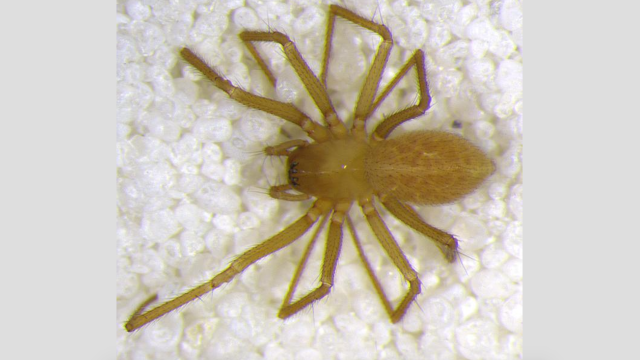Scientists have discovered a new species of sheet-weaving spider, and it only dwells in one cave in southern Indiana. As its name suggests, this spider spins flat, tightly-woven, horizontal webs. There are thousands of species of sheet-weavers, and you’ve probably walked through one of their webs by accident some point.
Islandiana lewisi only occupies a single cave in the Midwest. Photo: Marc Milne
“In the morning when there’s dew on the grass, and you see the little horizontal webs – those are sheet webs,” Marc Milne told Gizmodo. Milne is an arachnologist at the University of Indianapolis who identified the new spider in Indiana.
This new sheet-weaver, dubbed Islandiana lewisi, is most likely not dangerous to humans. It’s only about 2mm long and probably eats other small arthropods, such as springtails.
“Springtails are like little lunch sacks for spiders. They’re soft and packed with nutrients,” Milne said. “When the springtails hop into the air, they can land and get stuck in these sheet webs.”
Though he hasn’t observed it directly, Milne thinks this is what’s happening in Stygeon River Cave where I. lewisi live.
As described in his study published in June in Subterranean Biology, Milne named the new spider lewisi as a nod to his colleague Julian Lewis, an independent isopod taxonomist who first brought his attention to the spiders hiding out in the Indiana cave.
Milne went to see the spiders for himself, and found the cave to be a little treacherous to navigate.
“It’s actually a bit of a tight squeeze,” he told Gizmodo. “It’s small and narrow. You have to crawl to get in.”
He added that the cave occasionally floods, leaving it very wet and mucky. But the spiders seemed right at home, spinning their sheet webs between giant, mud-covered boulders.
While the spiders had lost some of their pigment and were slightly translucent (a common trait among light-deprived, cave-dwelling creatures), he noticed their eyes hadn’t shrunk. This led him to believe the spiders hadn’t occupied the cave as long as many other cave-bound animals we know of – maybe just a few million years as opposed to hundreds of millions of years.
Thought it may seem strange that a new species of spider has been lurking undetected in Indiana, Milne says it’s a misconception that all new spiders are going to be found in sparsely populated areas.
“When people think of new spiders being discovered, they think of the Amazon or the ice underneath Antarctica,” he said.
“But even in our backyard, there are a lot of new, undiscovered organisms that we don’t know much about. People think we know everything about the organisms in the Midwest and the United States because we’ve scoured the land, but in reality, we haven’t. A lot of groups are really understudied. Spiders are just one of them.”
